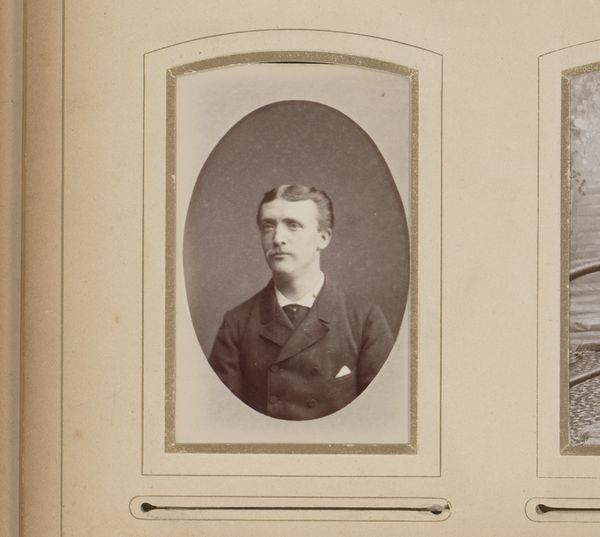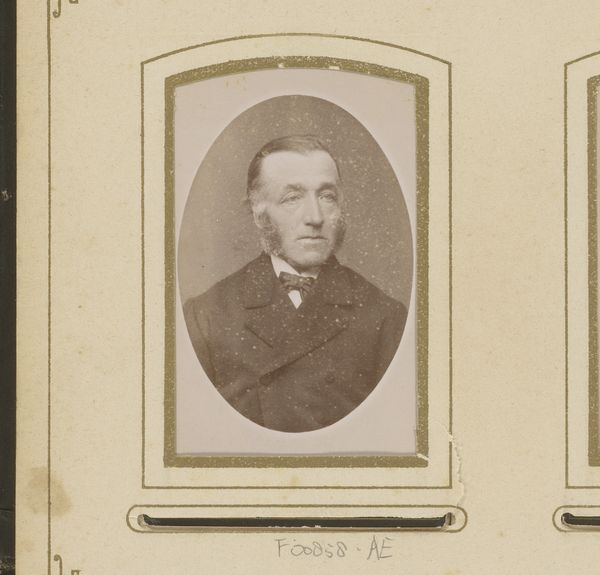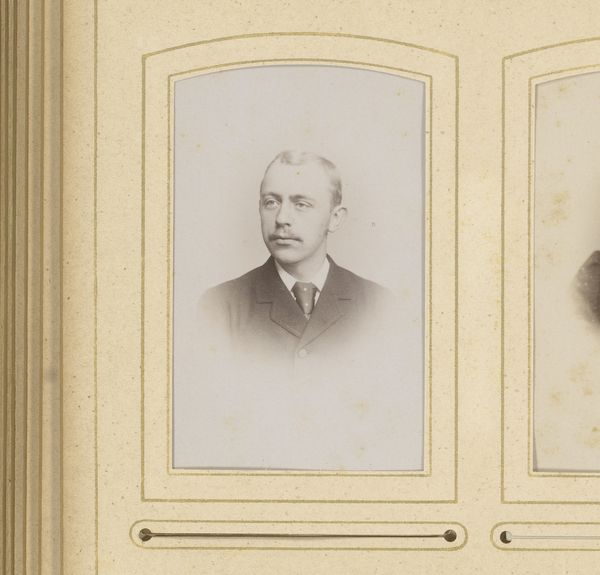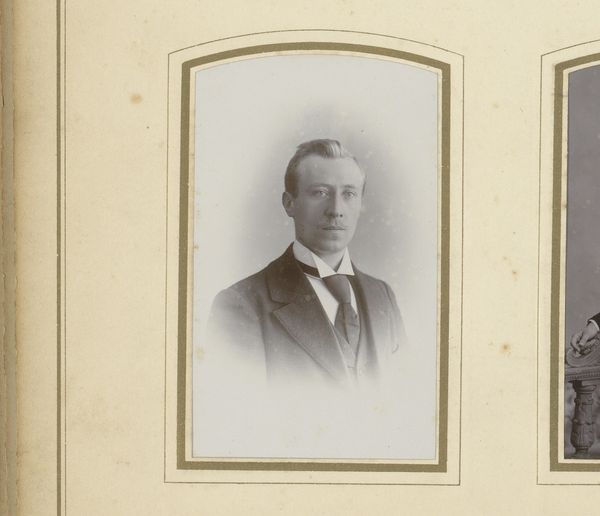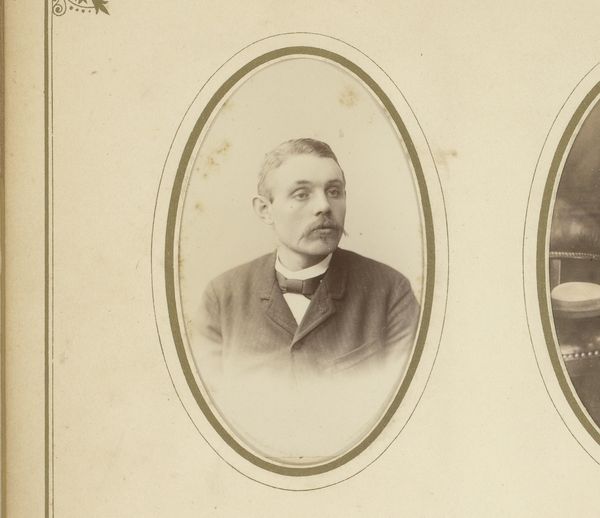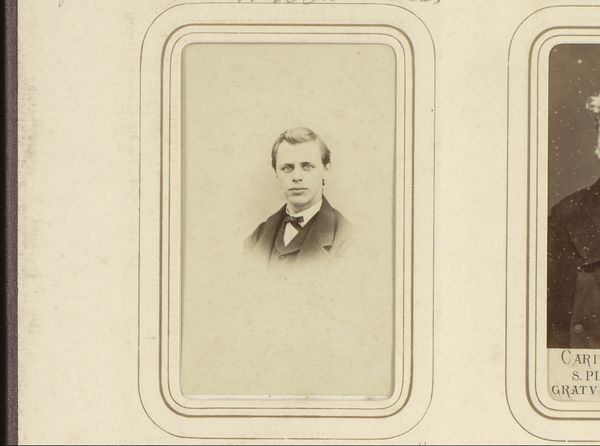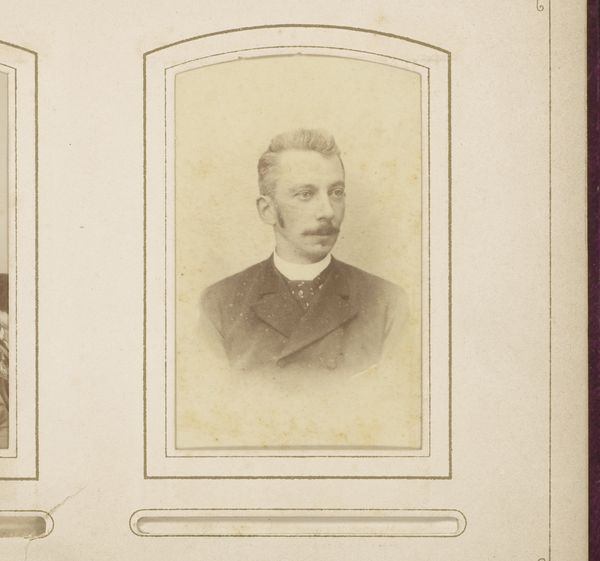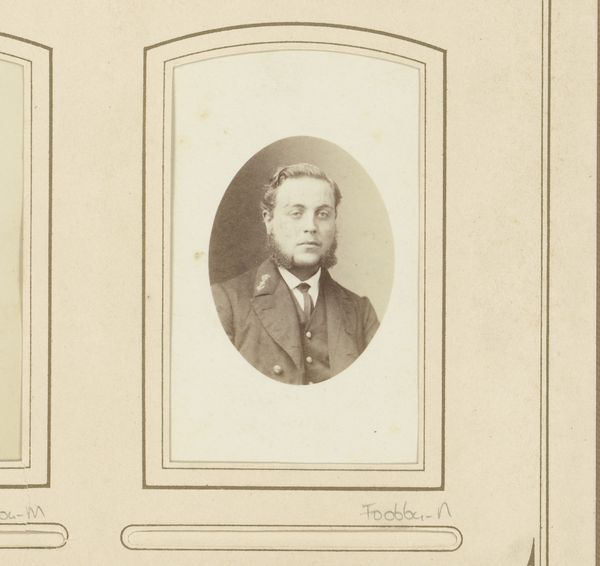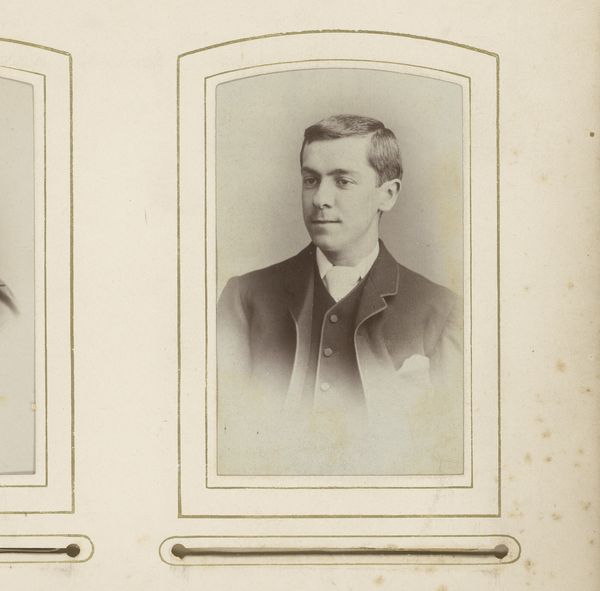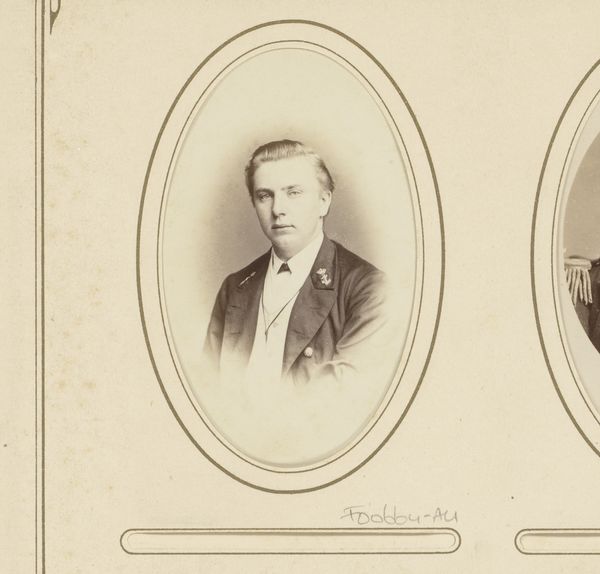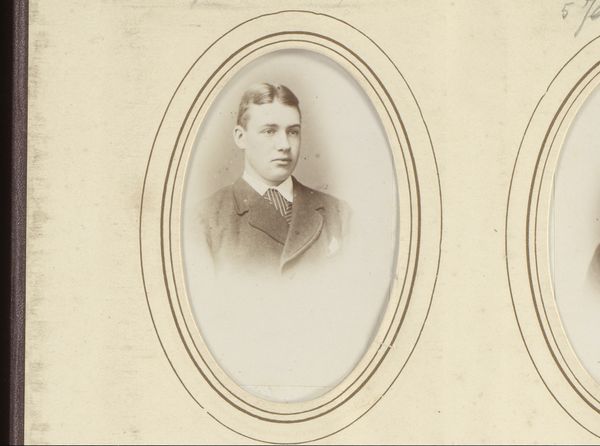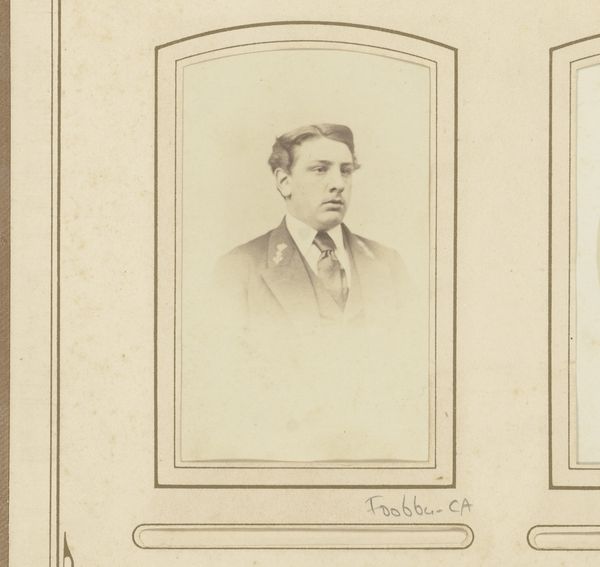
Dimensions: height 86 mm, width 53 mm
Copyright: Rijks Museum: Open Domain
Curator: What strikes you most about this 1870s gelatin-silver print, “Portret van een man met bakkebaarden,” taken by Binger & Chits? Editor: The severe formality, I think. The neutral backdrop coupled with the subject’s unwavering gaze feels deliberately constructed to convey respectability. What social currents do you think shaped this visual language? Curator: Indeed. Think of the burgeoning middle class solidifying its identity. Photography served to democratize portraiture previously only available to the wealthy. His sidewhiskers, meticulously groomed, speaks to Victorian ideals of masculinity – control and order made visible. Editor: And consider that this photograph, with its claim to objective truth, coincides with a time of great colonial expansion and scientific advancement, lending itself to the visual encoding of power dynamics based on class and gender. It presents a controlled narrative. Curator: Control and order extending also to the spiritual realm. This “truth” often had a moralistic function in that era. These photos would also act like talismans in that era, offering people ways to remember themselves but also their loved ones as time started to quicken. Editor: This photographic staging reminds us that image production in itself always serves some function for the dominant culture of that moment, shaping ideals while simultaneously revealing hidden hierarchies and values. And let's not ignore that not everyone could afford a portrait at that time. Curator: It’s fascinating how a seemingly straightforward portrait can reveal so much. A preserved moment imbued with so many complex cultural signifiers that continue to speak volumes. Editor: Absolutely. And how these supposedly neutral representations still wield power and require deconstruction today when examining identity in a colonial and post-colonial landscape.
Comments
No comments
Be the first to comment and join the conversation on the ultimate creative platform.
